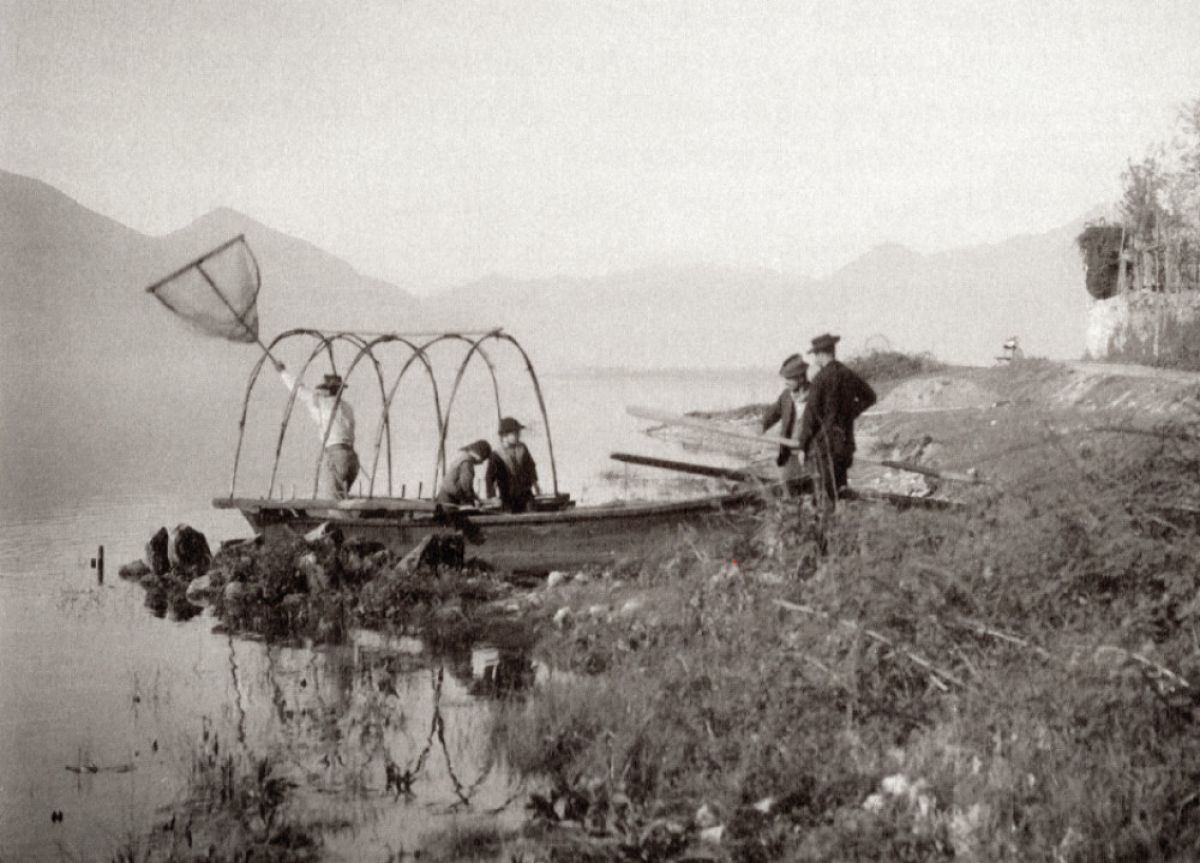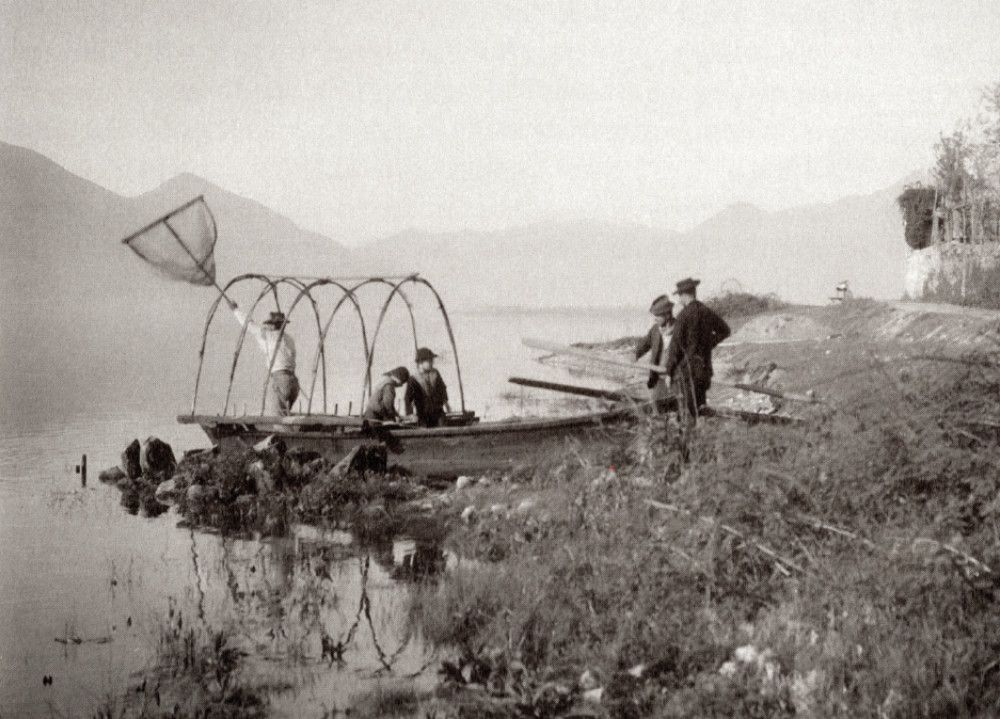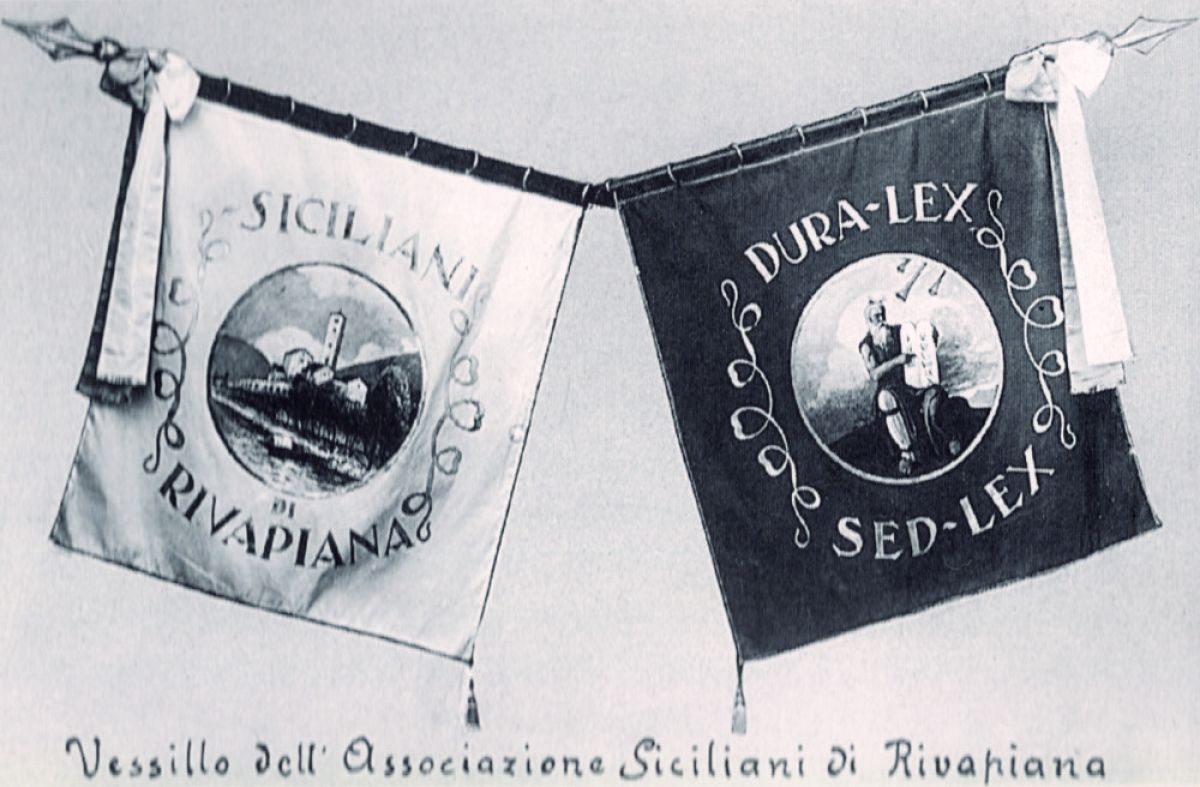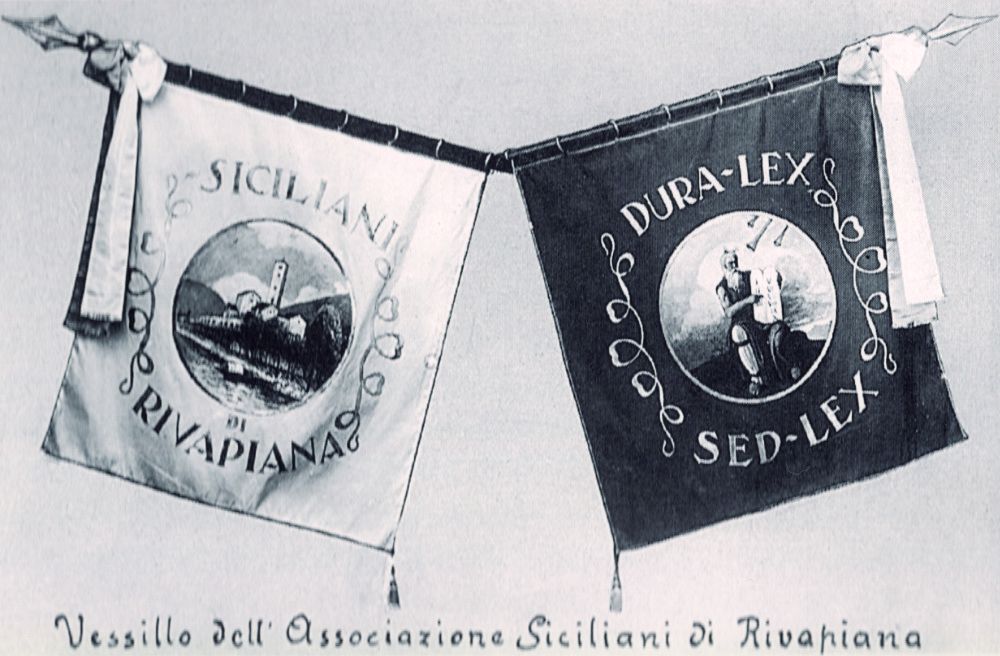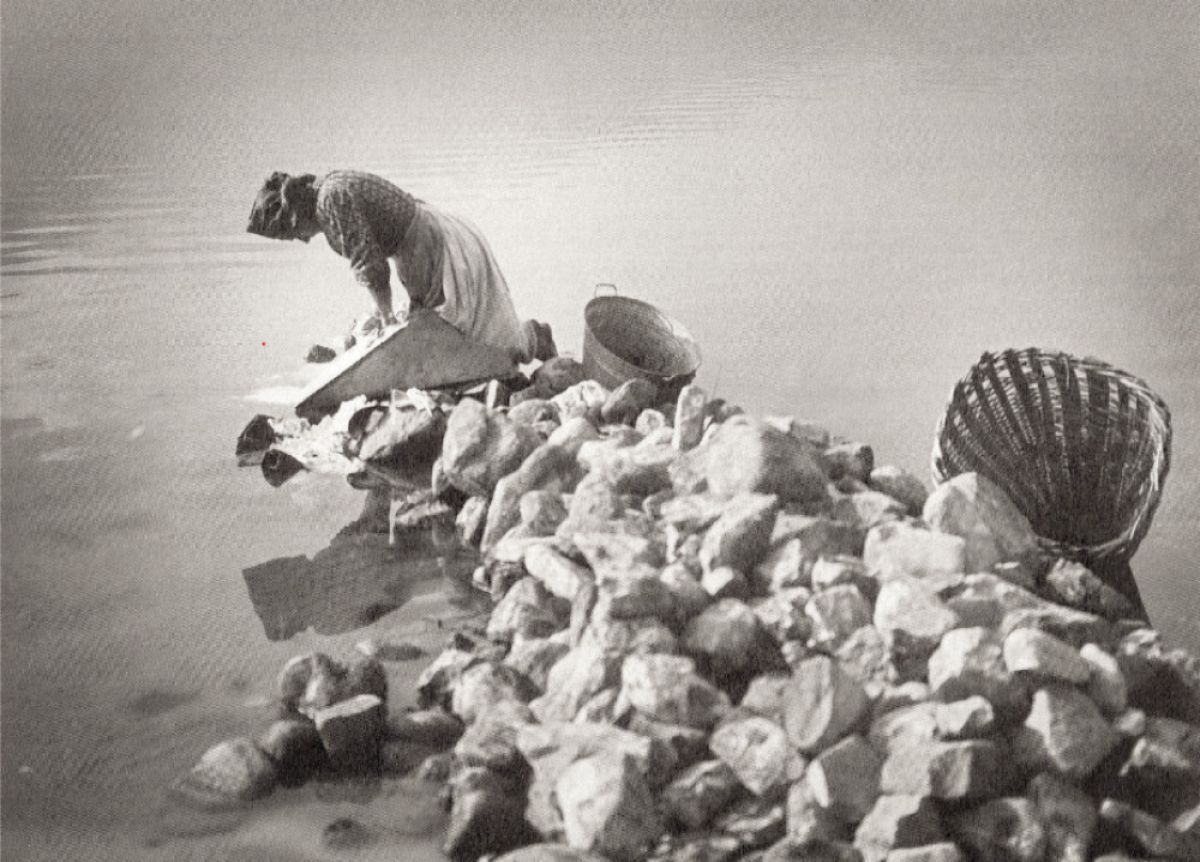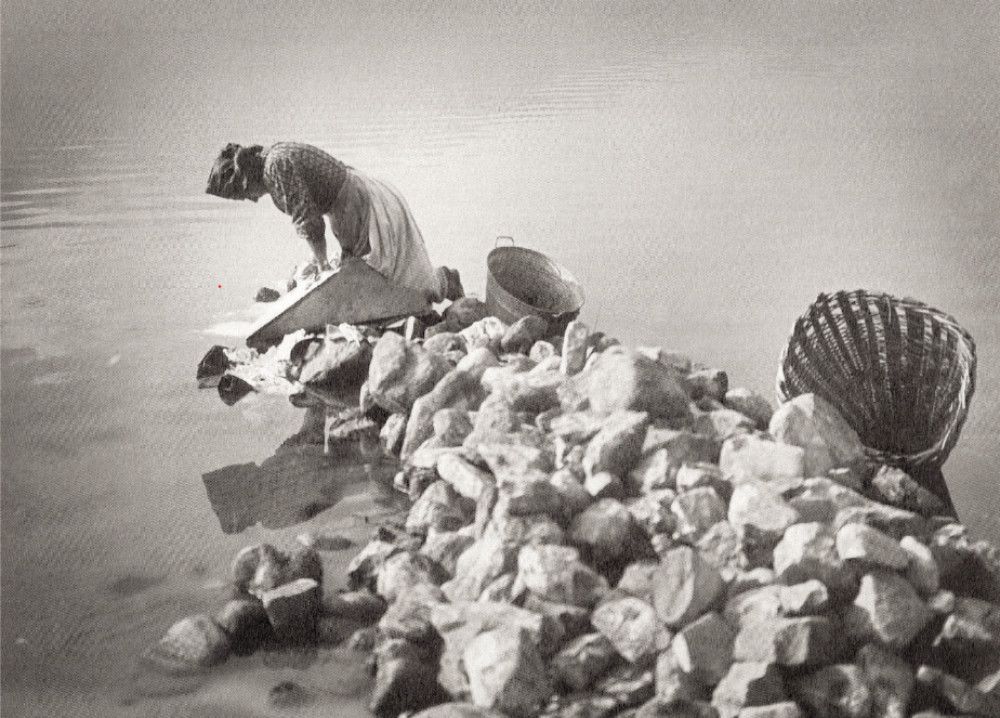Rivapiana

The natural shoreline is a delightful tourist spot where people enjoy cooling off in summer and going for a stroll in other seasons. Fishing boats and other vessels can be anchored in some parts. In the past, the lake’s shore was not especially appealing as it was predominantly poor families who lived there. Apart from suffering flooding, the lake’s shore was used to dispose of waste and untreated sewerage ended up in the lake. Perhaps that explains why so few people learned to swim?
Fishermen in Rivapiana, 1930
People rowed over to the Magadino valley to gather reeds – used as bedding for animals – and wood brought down during storms. Few families made a living from fishing because most of the fishing rights had been assigned to the neighbouring municipality of Muralto. Constant headwinds made this an arduous task for oarsmen – just like today, the ‘muscendro’ wind (from Monte Ceneri towards the lake) blew in the morning and the ‘inverna’ (from the lake towards the valley) in the evening.
Banner of the ‘Sicilians of Rivapiana’, designed by Ugo Zaccheo in 1932
During the 1930s, the cantonal authorities decided to merge the estates to create larger areas of agricultural land and a road network. This dramatic change was met with resistance from local people who had a sentimental attachment to their plots of land, memories of the sweat of their forefathers and feared being penalised by ending up with land worth less. During the fierce debate, the ‘Rüpianitt’ (the residents of Rivapiana) were nicknamed ‘Sicilians’: the protest was ironically presented as the creation of the Sicilian Republic with lots of banners by the artist Ugo Zaccheo.

Pike (Esox lucius)
The pike is a large predatory fish that can weigh up to 15 kg and live for over 15 years. Coveted by fishermen, it lives in still waters and can move at lightning-fast speed to capture its prey.

